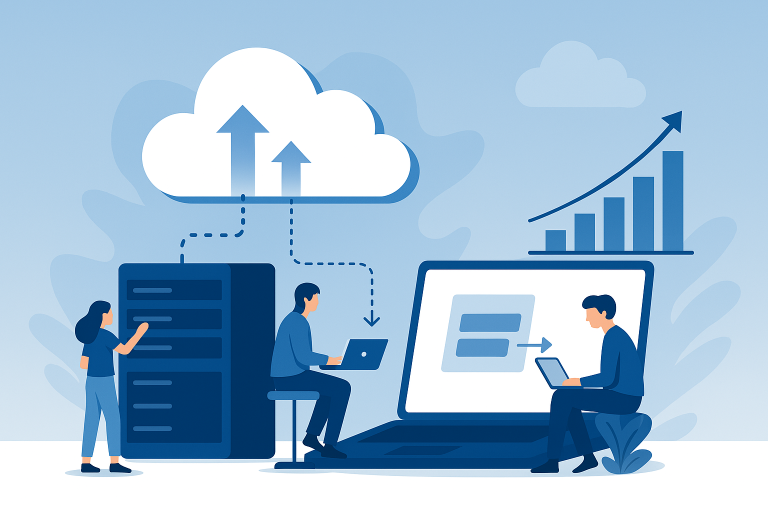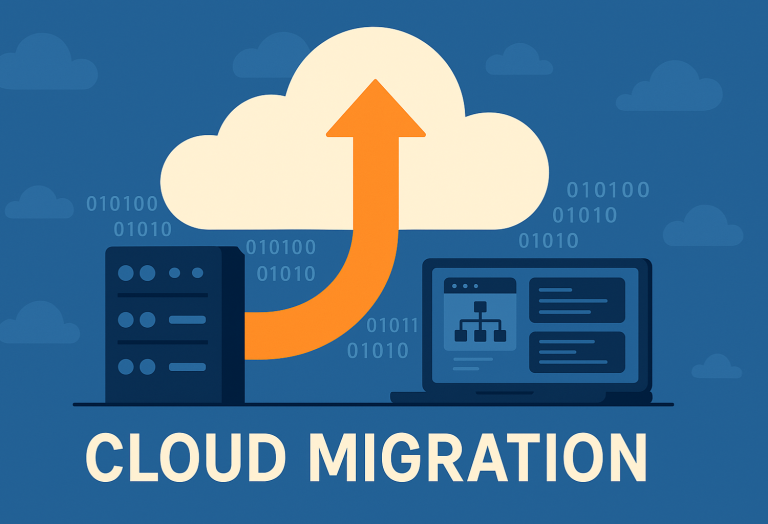
Traditionally, when an organization plan to deploy any application, it has to set up the whole infrastructure, including a physical server on its premises. The investment needed to set up a physical server and real hardware is substantial. Consequently, for most small and medium-sized businesses, starting projects that require elaborate infrastructure is difficult. The high costs and risks associated with investing in physical infrastructure further exacerbate these challenges. However, with Public vs Private vs Hybrid Cloud options, businesses can now opt for more flexible and cost-effective solutions that reduce the need for hefty upfront investments and mitigate risks.
Therefore, adopting cloud technology is an excellent alternative to investing in physical resources. Incorporating cloud technology in your business has multiple benefits, such as Scalability, Accessibility, Adaptability, Flexibility in payment modes, Easier deployment facility on a secure worldwide server, and so on. There are three prominent cloud models: public, private, and hybrid cloud. Each model offers specific features and advantages. Therefore, a comparative study of Public vs Private vs Hybrid Cloud models will help you understand the key differences and determine which cloud model best suits your business.
Key Features of Public, Private, and Hybrid Cloud Models
Public Cloud
A third-party manages this cloud computing model to provide resources and services to users. Remote users worldwide can pay and use resources like virtual machines, applications, or storage.
Host: Service providers, such as AWS, Microsoft Azure, or Google Cloud, host the Public Cloud. The service providers manage the servers and provide services over the internet.
Users: There is no limit to the number of users. Users can pay and use their resources. When the volume is high, servers are scaled up; in cases of low volume, servers are scaled down.
Access: You can access infrastructure and computing resources online anywhere. Customers can use them by paying for the subscription.
Flexibility: These cloud services are highly flexible, as you can get additional resources whenever required. You just need to upgrade your service package.
Scalability: Public cloud model allows you to scale up and down resources easily, depending on current business needs to perform at a minimal cost.
When to Use: Public Cloud is suitable to use when
There is a high chance of overgrowth, so servers can be scaled up instantly.
There is a budget crunch to set up own private labs.
The end-users are distributed since the public cloud is location-independent.
Cost: It is comparatively cheaper than the private and hybrid cloud.
Benefits:
No requirement of Capital Expenditure (CapEx) to set up infrastructure.
Flexible pricing options.
As a client, you don’t have to bother about maintenance and upgrades; the cloud provider will do everything.
Provides on-demand scalability without an extra charge.
Geographically distributed servers and data centers offer more reliability.
Time-saving and easy-to-use cloud service model.
Challenges:
Less secure as compared to the private cloud
Low visibility and control of the physical infrastructure
Doesn’t offer many customization options to the customers.
Private Cloud
This cloud computing model’s infrastructure remains dedicated to a single organization. Therefore, it can be accessed only within that organization.
Host: Private clouds are hosted by third-party service providers. It can reside on-premises or in a data center.
Users: Only the users of the client organization can access the cloud data.
Access: Company employees with cloud infrastructure can access private cloud services within a closed network.
Owner: A private cloud is owned by private cloud service provider organizations.
Flexibility: Private cloud services offer significant flexibility in terms of customization. As a result, client companies can receive tailored service packages that meet their specific business needs. Moreover, the hardware can be located either on-premises or in remote data centers.
Scalability: You can scale up and down resources within the service provider’s capacity, but it is expensive.
When to Use: Private cloud is suitable to use when
Data control and security are the key concerns.
There is a massive requirement for customization.
There is no budget issue to invest in advanced infrastructure.
Cost: Private cloud is the most expensive of the other two service models.
Benefits:
It offers you high security for sensitive data.
Restricted access facility only for the employees within the organization.
Provides advanced customization options for any business logic.
Client companies can ensure that their standard matches any of the regulatory compliance.
Challenges:
Huge CapEx is needed for infrastructure setup.
Scale-up and down are expensive and time-consuming.
Comparatively complicated to learn, control and manage.
Provides restricted opportunities for scalability, agility, and availability.
Hybrid Cloud
This combination of public and private clouds comprises the components of both public and private clouds. A hybrid cloud allows connecting both cloud deployment models.
Host: Depending on the use case, third-party service providers host some services, while the public cloud service provider hosts the rest.
Users: The data is split between public and private access based on its importance. Consequently, a hybrid cloud allows clients to secure critical data in private cloud storage while leveraging public cloud resources for other needs.
Access: Hybrid cloud allows you to control access with the correct configuration and infrastructure.
Owner: Here, the private cloud service provider owns some of the components, and the organization itself owns the remaining.
Flexibility: This cloud model offers flexibility in terms of data. You can move data between the public and private clouds.
Scalability: Regarding scalability, the hybrid cloud is better than the private cloud but not as good as the public cloud.
When to Use: A hybrid cloud is suitable to use when
An organization need advanced scalability and the best security.
An organization needs to set up a private cloud but has a budget crunch. It can cut costs by deploying the lesser essential services on the public cloud.
There is a chance of a short-term traffic surge, and a private cloud cannot provide that level of resource capacity. Then, organizations can migrate to public clouds temporarily (Cloud Bursting).
Cost: It is more expensive than public but cheaper than private.
Benefits:
Provides a greater level of customization opportunity
Highest level of scalability along with security
Cost-effective cloud solution for medium-level organizations
Workloads can be distributed across clouds
Challenges:
Complicated architecture design.
Expenses can be difficult to track and manage.
Which one is suitable for you?
Small businesses and start-ups generally prefer the public cloud due to its cost. In contrast, medium to larger organizations prefer a hybrid of private and public clouds. A hybrid cloud helps to minimize the cost and maximize the outcome. Organizations that need tight security (such as government agencies) go for a private cloud due to its tight control of security.
Conclusion
Considering the pros and cons of each model, you can choose the most suitable cloud model based on your business needs and IT budget. Additionally, consulting a cloud infrastructure company can help you better understand your requirements and select the right cloud model for your business.







